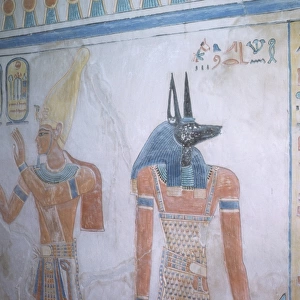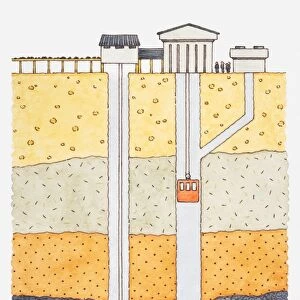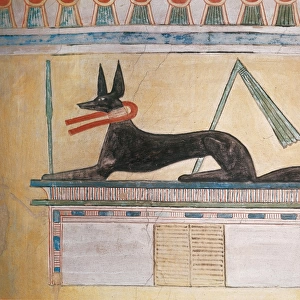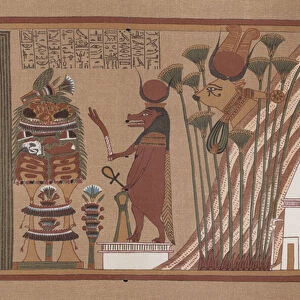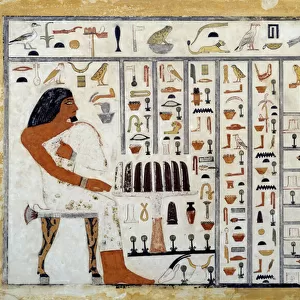Home > Africa > Egypt > Related Images
Ptolemaic temple of Hathor and Maat. Horus and Anubis. Reli
![]()

Wall Art and Photo Gifts from Mary Evans Picture Library
Ptolemaic temple of Hathor and Maat. Horus and Anubis. Reli
Ptolemaic temple of Hathor and Maat. Polychrome reliefs that decorate the interior. Horus and Anubis. Deir el-Medina. Egypt
Mary Evans Picture Library makes available wonderful images created for people to enjoy over the centuries
Media ID 14317622
© Thaliastock / Mary Evans
Anubis Deir Deities Deity Divinities Divinity Dynasty El Medina Falcon Falcon Headed Gods Hathor Horus Jackal Jackal Headed Lagids Maat Mythological Mythology Perspective Polychrome Polychromy Ptolemaic Ritual
EDITORS COMMENTS
1. Title: "The Ptolemaic Temple of Hathor and Maat: A Sanctuary of Harmony and Balance, adorned with Polychrome Reliefs of Horus, Anubis, and other Divinities of Ancient Egypt" The captivating image showcases the intricately decorated interior of the Ptolemaic Temple of Hathor and Maat, located at Deir el-Medina in Egypt. Dating back to the Ptolemaic Era, this temple is a testament to the rich cultural heritage and religious practices of the ancient civilization. The walls of the temple are adorned with stunning polychrome reliefs, which add a vibrant and dynamic touch to the otherwise monolithic structure. The reliefs depict various deities, including Horus, the falcon-headed god of the sky, and Anubis, the jackal-headed god associated with mummification and the afterlife. Horus, the falcon-headed god, is shown in his majestic form, with outstretched wings and a crown adorned with the sun disc and the uraeus serpent. His presence symbolizes protection, power, and kingship. Anubis, on the other hand, is depicted as a jackal-headed god, holding the Ankh, the symbol of life, and the scepter, representing dominion over the dead. The temple's dedication to Hathor, the goddess of love, music, and dance, and Maat, the goddess of truth, justice, and cosmic order, reflects the importance of balance and harmony in ancient Egyptian religious beliefs. The temple's decorative program underscores the interconnectedness of various aspects of life, death, and the natural world. The Ptolemaic Temple of Hathor and Maat at Deir el-Medina offers a unique glimpse into the mythological and religious practices of ancient Egypt, providing valuable insights into the beliefs and values of the people who inhabited this land thousands of years ago.
MADE IN AUSTRALIA
Safe Shipping with 30 Day Money Back Guarantee
FREE PERSONALISATION*
We are proud to offer a range of customisation features including Personalised Captions, Color Filters and Picture Zoom Tools
SECURE PAYMENTS
We happily accept a wide range of payment options so you can pay for the things you need in the way that is most convenient for you
* Options may vary by product and licensing agreement. Zoomed Pictures can be adjusted in the Cart.


